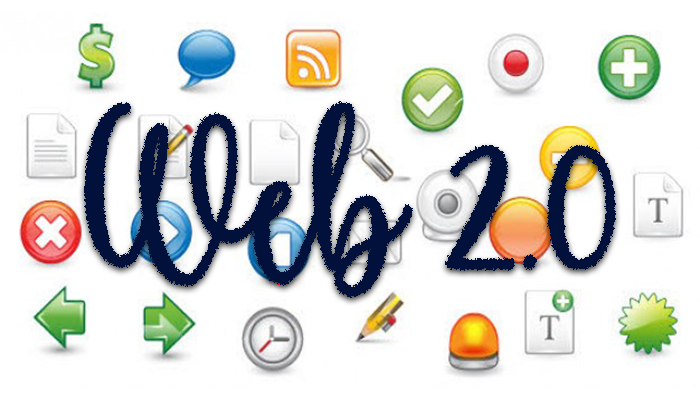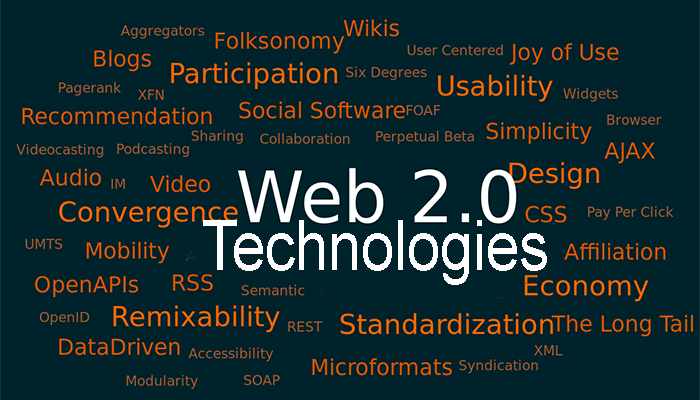Web 2.0
Contents
Before Web 2.0 ?
Before learning about Web 2.0 and Beyond let us get to know about web. If you would like to read more article TechEdify is the best place.
We all know what web is. It is a collection of vast amount of information that human civilisation gathered throughout its history. However, at present, web may not fit in to the generic description given above. In recent history, it has grown in to being a part of our lives and it has become a commodity of personal nature, which has an influence on our lives from cradle to grave.

History about Web 2.0
Tim Berners-Lee invented World Wide Web (WWW) or Web in 1989 as part of his research work for CERN, the European Organisation for Nuclear Research. He envisioned it to be an open source of research information, which allows easy access to scientists spread across the world. In 1990, he came up with Hyper Text Transfer Protocol (HTTP), the Hyper Text Mark-up Language (HTML) and the very first web browser, named ‘WorldWideWeb’, which were the building blocks necessary for a working Web.
Initially, Web was simply a collection of static pages that contained information provided by authors of the websites. Users can enter the web address and read the content of the website via the web browser. The pages were colourful and contained animation to keep it interesting to the readers who were at the receiving end of the mostly one-way communication medium. The user interactions were limited to mouse clicks on a web link to navigate among pages or keyboard entries to fill a form to register so visitor can access more information. In most occasions you can see a website similar to what was explained above, in other terms, a website that follows Web 1.0 trend.
What is so special about Web 2.0?
Let us compare websites like Facebook, Twitter, Wikipedia, Youtube, Foursquare and Quora with the school websites that we usually see. Websites such as Facebook allows common users like you and me to add, delete and edit content. We can publish whatever we want so the world can see it. This facilitates richer user participation and opens new avenues in World Wide Web. Anyone of us can create an account and start writing about anything in Wikipedia.
Technology Aspect
In technological aspect, Extensible Mark-up Language (XML), JavaScript scripting language and AJAX framework play a major role in bringing Web 2.0 to life. Purpose of JavaScript is allowing web developers to program how the web browser should display and behave when a user visits the website. For example, JavaScript can be used to create a text area on the web page for writing your status message and a ‘post-button’ to save the status to the database hosted at the web server. When you click on the post-button, the status message is bundled in to an XML object and sent to the server from the browser, according to the specifications of AJAX framework. At the server end, the message is saved to a database so it can be retrieved next time your profile is visited.

Trend of Web 2.0
Web 2.0 trend has changed our lives dramatically. It has redefined the way we manage our relationships and interact with our family and friends. Many of us have Facebook and Twitter profiles that are maintained by ourselves. We often chat with our distant friends, check-in at stylish restaurants using GPS of our mobile phones and upload pictures or tweet about memories that we wish not to fade away. This trend has also assisted in forming a subculture around it that transcend World Wide Web. It is a prime example is word ‘Selfie’ that was added to Oxford dictionary last year. Another buzzword that gained popularity due to this trend is ‘meme’ (/mi:m/), a fascinating way of expressing ideas.
Ideas spread faster and physical boundaries are no more of any value. The outdated centralised control of information flow is shattered and authorities or governments cannot control what we see or say anymore. Arab Spring, where young Egyptians and Tunisians revolted against and toppled their dictatorial governments, is probably the best example. It all started with a mere Facebook page that expressed the disappointment of actions of their rulers. Another example is Wikileaks, which allows anonymously publishing information that are often kept secret by corrupted authorities.
Web 2.0 has been all about user created content and competition among multinational giants like Google and newborn Facebook trying to win more and more users. So, have we seen the end of evolution of World Wide Web? Do not jump in to conclusions just yet… Web 3.0 is already here!
An arena waiting to be conquered
Web 3.0, also known as semantic web, is one of the hottest research topics in the academia. Semantic web focuses on structuring information in the web, based on their meaning, so that software programs can understand the content in a web page. Imagine a future where your browser understands what you mean when you search for “I want to buy a dress for my cousin’s wedding” and lists the nearby shops that sell dresses that matches your taste and the occasion, and display suggestions for matching accessories within your budget.
Software Agents and data ontologies play major roles in creating artificial intelligent systems that are at the core of Web 3.0. A Software Agent is a software program that is designed to perform a small portion of a large task. Usually, multiple software agents are employed for a task and their cumulative output achieves the desired result. An example is a web crawler that reads websites to gather data for search engines such as Google and Microsoft’s Bing. Ontology, in this particular context, is a methodology, used for understanding relationships among data segments that comes from various sources and preserving them for later use. Its visual representation is similar to a tree data structure that can have any number of connections among nodes.
Beyond 2.0
When the Web was first introduced, the focus was on standardising programming elements and communication protocols so experts, dispersed all over the world, would be able to work together on a common platform. These efforts, which changed the back-end of the web, were only visible to programmers and general users hardly experienced any changes. However, focus gradually shifted towards improving front-end elements of the web, which opened up various possibilities that were completely novel, hence, the term Web 2.0 was triggered. The latest trends hint that the next wave of changes, dubbed Web 3.0, will be influenced by artificial intelligence. This again will be happening at the back-end but users would be able to experience dramatic improvements of the services provided through the web.
